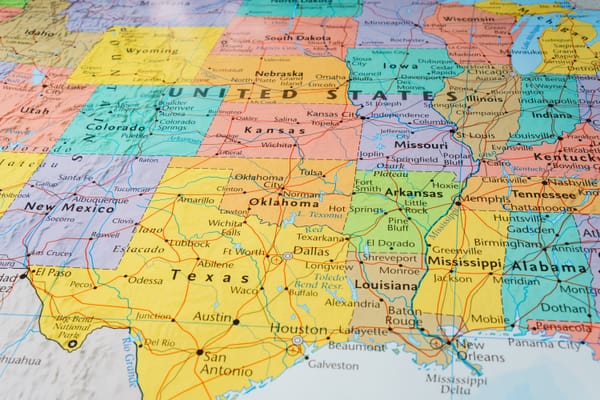Top Airbnb Analytics Tools and Metrics to Stay Ahead of the Competition

Monitoring Airbnb analytics like occupancy rates, ADR, and guest reviews is important to keep a competitive edge in the Airbnb marketplace. Here’s how to leverage tools to get data insights to understand the metrics of your current portfolio or to estimate your future investments.
Are your Airbnb pricing decisions based on market intelligence and data or educated guesses? Can you accurately predict demand patterns in your neighborhood and your own listing? Do you know precisely how your properties perform against similar listings?
As the short-term rental market became more of a saturated market, successful hosts set themselves apart not by intuition but by their mastery of analytics. The short-term rental market has expanded at a tremendous speed, and with that, the competition and need for accurate data too.
Airbnb’s own platform and a simple spreadsheet are good places to start, but there are better ways to analyze and compare the performance of your vacation rentals as this blog post will explain. This guide lists the tools that give you unique insights and metrics that turn overwhelming data into clear, actionable strategies.
Using Airbnb for Airbnb Analytics
If you mostly list your vacation rentals on Airbnb, you’ll find the platform useful (however, only to some degree). It offers a number of professional hosting tools that you can access via Account Settings.
You can, for example, use these professional tools to monitor your performance by identifying your best-performing listing (a useful feature if you have a portfolio with several vacation rentals). Alternatively, you can also review the historical performance of all your listings over the past year.
By including data about your upcoming bookings, you can also review the future performance of your listings. This can come in useful in determining seasonality trends, for example. However, remember the proverb of never to count your chickens before they hatch. Cancellations happen — one of the major lessons the pandemic has taught hosts and property managers.
Airbnb’s Professional Hosting Tools
If you want to see how you stack up against similar listings in your neighborhood, you can also use Airbnb’s professional hosting tools to draw comparisons. This is probably the only time when it’s advised that you keep you with the proverbial Joneses.
To access these performance metrics, you simply go to Insights where you’ll see data for:
- Hosting progress
- Conversion
- Occupancy and rates
- Quality
- Earnings
Airbnb allows you to review, filter, and compare your hosting performance over the past 12 months. Although its built-in analytics aren't as advanced as those offered by paid tools, it still provides essential performance data to help you track your progress.
Overview of Key Airbnb Performance Metrics
While Airbnb’s own dashboard is a good starting point, there are various other Airbnb analytics that Airbnb hosts should track too. Here are additional metrics that you’ll also want to include in your analysis:
Occupancy rate
Occupancy rate is one of the most critical performance indicators. Tracking your occupancy rate will give you insight into your overall performance as well as if your pricing strategy works.
Here’s a formula for working out your average occupancy rate:
(The number of booked nights ÷ The number of available nights) X 100 = Average occupancy rate
It’s important that you compare your answer to your city’s average occupancy rate. Otherwise, the number won’t make that much sense. For example, if your number is significantly higher, it could mean that your nightly rate is too low. On the other hand, if it’s drastically lower, you’ll need to consider dropping your price.
Nights booked/vacant
While you’ll find occupancy rate more informative, knowing the number of nights a property has been booked in a year can also be important. This is especially true if your listing is located in a city with strict regulations that cap the number of booked nights.
The vacation rental platform that you use will list this number somewhere. If you use a vacation rental software solution like iGMS, you can work this out by referring to the number of confirmed reservations displayed on the dashboard.
Average daily rate (ADR)
For a better understanding of how much money a property can generate, you’ll need to know its average daily rate.
Here’s a formula for working out your ADR:
The total revenue generated by reservations ÷ The total number of nights booked = Average daily rate
As you’ll see, no mention is made of any operating costs. So, this merely the earnings potential.
A high ADR isn’t necessarily always positive. If you calculated your average occupancy rate and discovered that it was lower than your area’s occupancy rate, your ADR might be too high.
Revenue per available room (RevPar)
For a more comprehensive picture, you need to combine your average daily rate with your occupancy rate. To do that, you can work out your revenue per available room.
Here’s a formula for working out your ADR:
Total room revenue ÷ Number of available rooms = Revenue per available room
Average length of stay (ALOS)
With long-term stays on the increase, it can also be a good idea to monitor the average length of stay. If you notice that your guests’ stays tend to become longer, investing in certain amenities that will make your property more geared for longer stays, like a washing machine and dedicated home office, can be a smart move. It can also give you a good idea if it will make sense for you to offer monthly discounts.
Here’s a formula for working out your ALOS:
The total nights occupied ÷ The total number of bookings = Average length of stay
This number doesn’t really give an indication of your property’s performance, but rather a glimpse into guest preferences. Alternatively, if you want to focus more on long-term stays and have already started to introduce changes to your strategy to attract more of these types of bookings, measuring your ALOS regularly can give you an indication of if your efforts are paying off.
While you don’t necessarily need to focus more on long-term stays, it’s key to remember that too many short stays can have a negative impact as it will call for more cleanings which will increase your operating costs.
Total revenue
Working out your total revenue is one of the easiest calculations. All you need to do is add up everything that your guests have paid such as your nightly rates, cleaning fee, and any other fees for extra services rendered. You will need to know this number to evaluate your profit potential as well as to calculate other important numbers like your guest acquisition cost.
Guest acquisition cost (GAC)
If you focus a lot on marketing, measuring your guest acquisition cost (GAC) will be important. In short, it determines how much it typically costs to attract a new guest.
Examples of guest acquisition activities include:
- Advertising costs
- Commission paid to online travel agencies (OTAs)
- Costs relating to your direct booking website (if you have one)
Here’s a formula for working out your GAC:
(The total amount spent on guest acquisition activities ÷ The total revenue per property) X 100 = Guest acquisition cost
To maximize your profits, you’ll want to keep this cost as low as possible. Typically, the higher your GAC, the less profitable your vacation rental business becomes.
Net operating income
Guest acquisition costs are only one of the expenses involved in running a short-term rental business. In fact, if you mostly rely on platforms like Airbnb, you’ll probably find that you need to spend very little on extra marketing. There are many other running expenses like:
- Cleaning fees and supplies
- Property maintenance
- Internet
- Vacation rental insurance
For a more accurate understanding of your expenditure, you’ll need to monitor your net operating income.
Here’s a formula for working out your net operating income:
Gross income — Operating expenses = Net operating income
The difference between your total revenue and net operating income shouldn’t be too huge. If it is, see where you can reduce your expenditure.
Response times
While your average response time won’t reveal the financial health of your short-term rental business, it will tell you more about the guest experience that you’re currently delivering. Plus, Airbnb encourages hosts to respond as quickly as possible and will reward hosts who reply within 24 hours with a higher ranking.
Here’s a formula for working out your average response time:
The total time it took to respond to all your different inquiries ÷ The total number of inquiries you received = Average response time
While you’re at it, it’s also good to track how many of your inquiries actually convert into bookings. After all, that’s the ultimate goal. In fact, it doesn’t matter in which industry you operate, tracking your conversion rate is essential for all types of businesses. It can give you a glimpse into whether your offering (aka your listing) meets the expectations of your target audience as well as how well you’re performing in terms of guest communication.
Here’s a formula for working out your inquiry-to-booking conversion rate:
The number of distinct inquiries you received ÷ The total number of bookings for that property = Inquiry-to-booking conversion rate
In addition to the response rate, Airbnb also keeps guest reviews in mind. Just like your response time will give you (and the different vacation rental platforms) a good idea of how you’re responding to guest expectations, your reviews will do the same.
However, unlike response time that’s quantifiable, it’s more difficult to use guest reviews to quantify your guest satisfaction. Sure, they give you a rating using a five-point scale, but the true value is uncovered when you read the actual review.
Airbnb Analytics Tools For Researching the Short-term Rental Market
A number of tools can help hosts and short-term rental investors analyze market data and use it to their advantage, whether it’s optimizing listing performance or making smarter investment decisions.
Here’s a list of the most popular tools in the vacation rental industry and what makes each one stand out.
AirDNA
AirDNA provides data and analytics for the short-term rental market. The tool primarily analyzes Airbnb and Vrbo data, offering insights into occupancy rates, competitive trends, and average daily rates for specific markets and submarkets. You can access virtually any submarket globally to identify microtrends and opportunities in specific neighborhoods.
AirDNA evaluates a property's investment potential by assessing seasonality trends and creating competitive benchmarks against top competitors. Trend Analysis allows you to plan strategies based on year-over-year trends, giving you a clearer view of market trajectory.
Their metric, called Performance Score, provides a rating based on daily occupancy rates, ADR, revenue potential, and booking lead times. The Airbnb Calculator, also known as Rentalizer, estimates the earning potential of any property using data from over 10 million listings. It can also provide suggestions on how to price your property effectively.
The Best Thing About This Tool
Great for investors evaluating new locations, especially those seeking promising submarkets to invest in STR.
Alltherooms
AllTheRooms, similar to AirDNA, can analyze any market globally as long as Airbnb listings are available.
The platform provides market analytics insights: local rental trends, competitor pricing, and occupancy rates to help optimize performance. Beyond short-term rentals, AllTheRooms also provides data for hotels and the hospitality industry in general. What truly sets them apart is their ability to offer 5+ years of historical data, along with future revenue projections.
In addition to occupancy rates, pricing, and revenue analysis, they also track traveler demographics, such as age, location, and booking history. Having access to this data helps optimize pricing strategies and provides a clearer picture of typical guests, allowing property owners to target their ideal customers.
The Best Thing About This Tool
Much more affordable for individual hosts as they offer lower pricing tiers.
Airbtics
The next tool, Airbtics, also provides market analysis for any location globally and claims to update Airbnb performance weekly. You can type in any address and estimate potential Airbnb revenue.
While tools like AirDNA and AllTheRooms calculate average occupancy rates, daily rates, and annual revenue, Airbtics uses median values instead. Median numbers are often lower than averages because they are less affected by outliers, such as unusually high-performing listings. This provides a more conservative estimate of what a typical property can earn.
Like other tools, Airbtics allows you to predict revenue trends, analyze seasonality patterns, and identify top-performing listings using data from over 15 million short-term rental listings across more than 54,000 markets worldwide.
The Best Thing About This Tool
Provides estimated median figures, offering more conservative revenue projections.
Rabbu
Rabbu is a free tool available exclusively for the U.S. market. It features a Market Finder, which pinpoints profitable rental markets using proprietary ROI scores, and a Property Marketplace offering pre-vetted Airbnb investment properties with detailed revenue projections and cap rate calculations.
Revenue and Financial Analysis tools, such as the Airbnb Calculator and Comparables Analysis, provide precise estimates of occupancy rates, ADR, and monthly revenue.
Beyond market analysis, Rabbu focuses on short-term rental investments, connecting buyers with real estate agents experienced in STR properties. It also links investors with specialized lenders, as traditional financing options often make it difficult to secure loans for Airbnb investments. Investors can leverage Regulation Guidance feature to navigate local short-term rental laws.
The Best Thing About This Tool
It's free. Plus, they can connect you with short-term rental investors and lenders willing to give you a loan to invest in STRs.
Mashvisor
Mashvisor is another powerful tool that provides short-term rental market insights in the U.S. It performs local market analysis with neighborhood-level data on occupancy, revenue, and profitability. It helps users identify top-performing short-term rental markets.
Thanks to its heatmaps, users can visually explore market trends. These interactive maps highlight areas with high occupancy rates and strong revenue potential. The Rental Comps feature allows you to compare your listing with similar Airbnbs in the area.
Mashvisor also analyzes amenities, pricing strategies, and reviews of top-performing rentals, giving users a well-rounded view of what works in any given market.
This tool is useful for both hosts and Airbnb investors to search for properties for sale, analyze key metrics, and make informed decisions about return on investment when buying short-term rental-friendly properties.
The Best Thing About This Tool
It combines Airbnb analytics and investment analytics on a single platform, making it easy to find and evaluate STR opportunities for sale in the U.S.
Awning
Awning is a U.S.-based company that provides services such as property management, insurance, and furnishing. However, they also offer a free tool that analyzes Airbnb data in the U.S.
Their free Airbnb estimator conducts a basic analysis of historical Airbnb data across the country, providing income potential for any address in the U.S. It offers insights into how a property performs, how you compare against the competition, and whether investing in it is worthwhile.
You can also explore the Top Airbnb Markets, where you’ll find key metrics such as market size, ROI, occupancy rates, the number of Airbnb listings, revenue, and other valuable data.
The Best Thing About This Tool
The free estimator of income potential for properties across the United States.
What Is the Best Airbnb Analytics Website?
All of the websites listed above can be used to analyze Airbnb data. Whether you use AirDNA or other tools, you only need to ensure they cover your desired market.
AirDNA, Airbtics, and AllTheRooms are tools with global coverage, allowing you to analyze properties in almost any market where Airbnb operates.
Some analytics tools are free or offer a free version with somewhat limited capabilities. You could also compare data from different sources. However, keep in mind that they may calculate figures slightly differently, so ballpark estimates don’t always need to match exactly.
Tracking and Analyzing Your Own Airbnb Performance
To help you make sense of all this data, you need to have a system in place. Here’s a brief overview of two of the most popular tools that you can use:
Spreadsheets
Spreadsheets might be considered by some as an old-school approach, but it remains one of the most user-friendly and cost-effective tools to have in your PropTech stack. It’s especially useful if you work as part of a bigger team.
You can, for example, create a shared spreadsheet in Google, making it easy for all the different property managers and other relevant team members involved to review data. That being said, if you plan on adding loads of data, it can become more difficult to keep track of everything.
Vacation rental software
Unlike spreadsheets that require a lot of manual input, using vacation rental software like iGMS can automate much of the workload — and update your data in real-time. iGMS offers an intuitive dashboard where you can view and analyze performance across all your connected booking channels at a glance, helping you stay on top of your business with minimal effort.
It focuses on two key areas: your business performance and guest communication. Some of the key metrics you’ll be able to monitor include:
- Occupancy rate
- Total revenue
- Number of booked nights for the current month
- Average daily revenue
- Inquiry-to-booking conversion rate
- Average response time
Beyond its core dashboard, iGMS also offers Market Insights — a feature designed to give hosts a competitive edge. With Market Insights, you can access real-time market data, track local trends, and benchmark your performance against similar listings in your area. This helps you make smarter pricing and business decisions, based on up-to-date information rather than guesswork.
Strategies for Maximizing Your Airbnb Revenue
All these different numbers will give you a lot more insight into your business, but to be able to improve your revenue will require practical steps. Here are a few easy-to-implement strategies that will move the needle in the right direction:
Invest in high-end amenities
If your analytics reveal that your average daily rate is low, you can’t simply decide to start asking more per night. It’s not as straightforward as that.
First, you’ll need to double-check that you offer enough value. Depending on what your investigation reveals, it could make financial sense for you to buy a couple of high-end amenities like a new coffee machine or install a hot tub.
Include extras
Another way that you can improve your value proposition is by offering extras to your guests. This doesn’t necessarily need to be in terms of furnishings, but can also come in the form of services. From dry cleaning to transportation, there are several services that you can consider to include in the nightly rate.
Refine your target market
If you want to boost your occupancy rate while at the same time decrease your guest acquisition cost, take a look at your target audience again. By refining your target audience, your marketing will become more effective. This could mean that you’ll find yourself having to spend less on acquiring new guests.
The truth is that your listing won’t tick everyone’s boxes. Why try to market it to all types of guests then?
Research similar listings
To understand your Airbnb analytics accurately, you need to benchmark your performance against that of your competitors. You might be happy with your occupancy rate, but it could be below par compared to what others are enjoying.
Researching similar listings is especially important when it comes to setting your daily rate. As mentioned earlier, you need to offer value. Fail to do that and your occupancy rate along with a whole lot of other numbers like your total revenue, guest acquisition cost, etc. will suffer.
The goal of the game, though, isn’t to find a way to let your Airbnb analytics be significantly different. Instead, use your competitors’ performance as a guideline to see if you’re on the right path.
Wrapping Things Up
From pricing to platform distribution, there’s a host of Airbnb analytics that hosts can track. Luckily, vacation rental software has also developed over the years and there are various solutions that you can use to get a more comprehensive picture.
Checking this data regularly won’t only help you with your own current performance, but it will also be helpful if you’re thinking about investing in other cities. Researching the competition and market is key if you want our project to succeed.
Check out iGMS vacation rental software for its intuitive dashboard where you can measure activities across all your channels at a glance and visualize your performance.
On top of the dashboard and Market Insights, it also helps you:
- Synchronize reservations across multiple platforms to eliminate double bookings.
- Automate the process of guest review send-outs.
- Create and coordinate cleaning tasks with live tracking to completion.
- Securely process payments via integration with Stripe.







